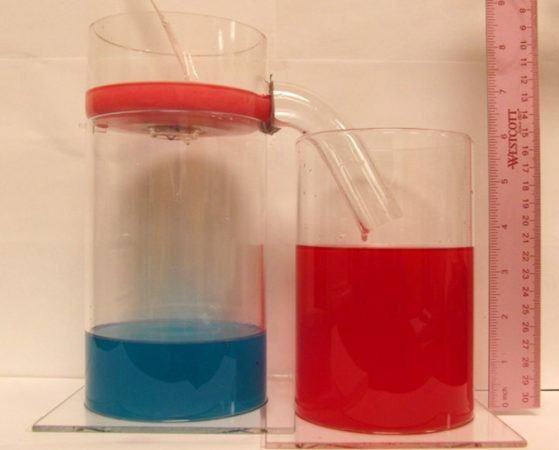An oil filter for water
A new screen can separate oil and water after they’ve mingled
Share this:
- Share via email (Opens in new window) Email
- Click to share on Facebook (Opens in new window) Facebook
- Click to share on X (Opens in new window) X
- Click to share on Pinterest (Opens in new window) Pinterest
- Click to share on Reddit (Opens in new window) Reddit
- Share to Google Classroom (Opens in new window) Google Classroom
- Click to print (Opens in new window) Print

There’s an old saying that oil and water don’t mix. But sometimes they do — especially when a chemical called a surfactant brings the two together. Once blended, oil and water become tough to pull apart. Unless, that is, you have a new type of sieve.
Researchers led by Anish Tuteja at the University of Michigan have created a new type of filter that lets water pass through but leaves oil behind. The device could be used to help clean water at treatment plants or mop up oil spills. It’s too soon, however, to know if it will be useful for large disasters, notes Tuteja.
In August, Tuteja’s team reported that a test version of the new filter performed almost perfectly in laboratory tests: It removed 99.9 percent of the oil from an oil-water mix.
Materials scientists like Tuteja specialize in trying to build new materials with useful properties. In the past, other scientists have built filters using a material that lets the oil through but stops the water. Tuteja says those filters need lots of energy to work well. They also quickly gum up with oil and must be cleaned.
Tuteja’s filter does the opposite: It allows water through but blocks the oil. And it doesn’t rely on extra energy to move the mixture through the system. Only gravity, a force that pulls objects toward the center of the Earth, tugs the liquids downward.
The scientists created the new device by dipping a base material — like a mesh or a net — into two chemicals. One of those chemicals loves water; the other repels oil. When a water-oil mixture now hits the filter, water — the heavier of the two liquids — gets pulled through, but oil does not.
The scientists tested their device on mixtures containing water and different types of oil. Each time, the water went through and the oil slid off the side into a different container.
“This is nice work,” Di Gao told Science News. He’s a chemical engineer at the University of Pittsburgh who did not work on the new material. As he explains: “It’s not too hard to make a surface that repels water but likes oil — but to do it the other way is hard.”
Power Words
surfactant A substance that helps other liquids combine.
materials science The study of how a material’s structure is related to its properties.
chemical engineering The branch of engineering concerned with the design and operation of industrial chemicals, processes and manufacturing.
gravity The force that pulls objects toward the center of the Earth. Gravity attracts any body with mass toward any other body with mass. The more mass there is, the more gravity there is.







